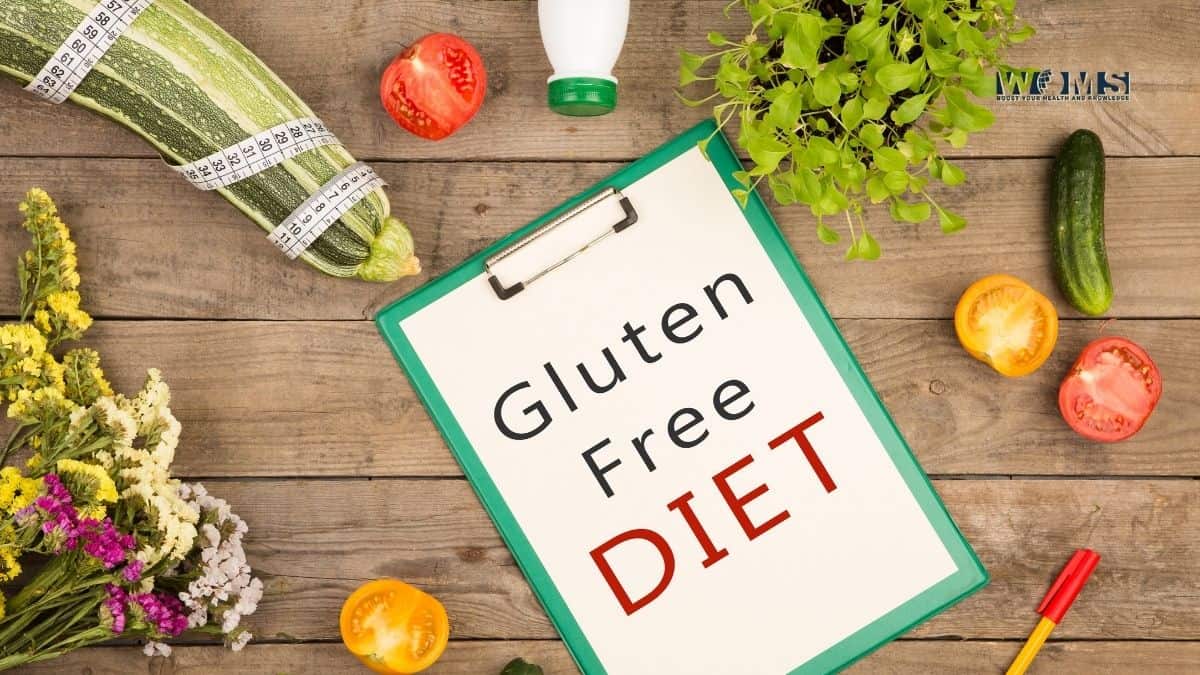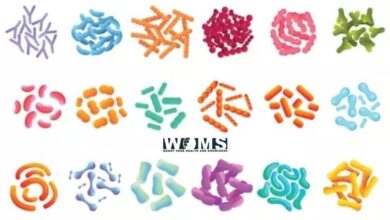A Beginner’s Guide and a Meal Plan for a Gluten free Diet

Millions of Americans are finding out that they are gluten-sensitive. If you are one of them, you must be getting knee-deep in research by now on how to go gluten-free.
Here is an easy-to-follow guide for beginners with a gluten-free meal plan that you can start today.
But before that, let’s discuss what exactly is gluten.
What is Gluten?
Gluten is a protein compound found in most grain-based foods like bread, cereals, pasta, and pastries. Gluten sensitivity is something that is propping up quite a bit these days, thanks to the awareness surrounding gluten.
As interest in health, nutrition, and wellness gains popularity, we are becoming more aware of what we are putting in our bodies. That is where people figure out their sensitivities to different foods.
Now let’s discuss what exactly is gluten sensitivity.
What is Gluten Sensitivity?
Everyone is different, and their reaction to gluten sensitivity can vary in symptoms and severity. Here are the most commonly reported symptoms of gluten sensitivity:
- Bloating
- Gas
- Fatigue
- Stomach-ache
- Mood swings
- Head-aches
- Joint pain
If you haven’t consulted your doctor about your food allergies and sensitivities, we recommend you have a chat before drawing any conclusions about whether you are gluten-sensitive.
Now that we have covered gluten sensitivity and how you can identify it, let’s talk about how to go gluten-free.
How do You Start Eliminating Gluten from Your Diet?
The good news is, a gluten-free diet is not very different from a well-balanced and nutritious diet rich in nutrients and whole foods. The bad news?
Gluten can be hidden in very many processed foods and packaged goods. So, going gluten-free will require some work, but once you start this journey, you will be on your way to great health and wellbeing.
The key to a gluten-free diet is to avoid wheat and wheat-based products. Here is a list of ingredients that contain wheat and wheat by-products:
- Wheat
- Flour
- Different forms of wheat: whole wheat, bulgur, semolina, Spelt, durum, farro, farina, wheat berries, Kamut, etc.
- Rye
- Barley
- Malt
So, this list may have you thinking you are doomed to live without bread for the rest of your life if you go gluten-free. Well, that’s not quite the case. You can still have delicious bread that is completely free of gluten. Check out this recipe to learn how to make gluten-free bread.
Not just bread, there is a slew of recipes you can look up to make just about any wheat product you used to love – including gluten-free desserts and pastries.
If you are wondering why you should make your own gluten-free bread, then the next segment will explain more.
Avoiding wheat products sounds simple and straightforward, right? Well, it is, and it isn’t. But avoiding the hidden gluten in some packaged foods may be trickier.
This is especially true when it comes to packaged and processed foods. Often large food manufacturing facilities will process gluten products along with products you don’t generally expect gluten in.
This cross-contamination can leave traces of gluten in unexpected products – like canned fruits or vegetables.
Our recommendation is to always read the labels and if any ingredient is unfamiliar, do a quick Google search for that product on your phone to confirm if that ingredient is extracted from wheat products.
Here are some typical compounds that are extracted from wheat products that you should avoid to stay gluten-free:
- Malt products – malt vinegar, malt sugar, malt syrup
- Hydrolized wheat protein
- Modified food starch – be sure to check if the starch comes from corn or wheat, or other grains.
- Maltodextrin – this may sometimes be made from wheat extracts. If the maltodextrin is made from rice or corn, it is safe to eat.
- Seitan – is a vegan protein substitute that is made from wheat.
- Burger/Ground meat fillers – often, ground meats can have fillers containing wheat extracts.
- Veggie Burgers or meat substitutes – read the labels and check if any ingredient has been extracted from wheat.
- Some protein replacements – beware that some protein powders may have wheat extracts in them. Check out this vegan protein powder alternative that is 100% gluten-free.
Generally speaking, look for brands that advertise their products to be 100% gluten-free. They will ensure all of the compounds and ingredients are gluten-free. It is always safe to check online the source of a compound or ingredient if you are unsure.
If all this seems too complex for you to follow on a daily basis, we recommend you eliminate processed and packaged foods from your diet as much as possible.
Shopping at the produce aisles and picking whole foods and frozen/fresh produce will take away the headache of having to read labels for possible gluten contamination. Frozen vegetables and fruits will also be a safe bet.
The bottom line: try to steer clear of processed and packaged foods as much as possible.
Let’s Talk Meal Plan
Now that we have discussed what to avoid let’s talk about a sample meal plan to get you started on your gluten-free wellness journey! As with all healthy meal plans, we suggest you pick a handful of recipes and dishes and recycle them through.
Yes, you may have to give up some gluten-rich products that you grew up liking, but you can easily make those recipes at home with gluten-free ingredients.
Being a little bit conscious about the foods you buy by reading the labels and doing your own research will go a long way. A word of caution – overreliance on gluten-free packaged foods is not wise. Try to stick with fresh produce and whole foods.
For this meal plan, we picked from the following healthy foods:
- Fresh fruits and vegetables
- Non-wheat grains (like rice, oats, quinoa)
- Fresh meats, eggs, poultry, and seafood
- Nuts and seeds
- Dairy products
We are including two options – one for regular diets and one for vegans. For more delicious vegan ideas, check out this post on vegan-friendly foods.
So, lets’ get the day started with breakfast.
A typical gluten-free breakfast will require you to move away from cereals. Here is something I absolutely love making for myself:
Breakfast Option 1:
- Two eggs (done your way)
- A slice of that gluten-free bread you baked on the weekend (or from the store)
- A glass of milk (or nut milk)
- A piece of fresh fruit (like apple/orange/banana)
Breakfast Option 2 (Vegan):
- Overnight oats with almond milk(pick steel-cut oats that were not milled at a wheat processing mill)
- A cup of frozen berries to top the oats with
- A glass of almond milk
- Freshly squeezed orange juice
See, that was easy! Now let’s look at two lunch options:
Lunch Option 1:
- A 6-ounce serving of grilled chicken with your home-made rub (salt, pepper, paprika, red chili pepper flakes, and barbeque seasoning)
- A fresh salad with a balsamic dressing
- A piece of fruit
Lunch Option 2: (Vegan):
- A sandwich made with your gluten-free bread, hummus, and grilled veggies
- A small side green salad
- A piece of fruit
Now for dinner.
Dinner Option 1:
- A 6 ounce serving of grilled or oven-baked salmon (again with a home-made rub) and lemon slices and herbs
- Baked potatoes
- Grilled veggies of your choice
Dinner Option 2 (Vegan):
- Vegan dahl (if you haven’t heard of it, this thick and creamy lentil curry is super popular with vegans worldwide and packed with all the protein you will need)
- Brown rice pilaf
- A Mediterranean salad (with fresh peppers, feta, onions, and a greek dressing)
- A side veggie of your choice
If those three mouth-watering options were not enough and you feel like having some mid-day snacks or indulging in late-night snacks or sweets, here are some options:
Snacks & Desserts:
- Fresh greek yogurt with canned peaches (check to make sure it is canned in just syrup) topped with some crushed pistachio
- Frozen berries with fresh greek yogurt
- Ice cream
- Chocolate is okay (but check the ingredients and pick a brand that was made in gluten-free facilities)
- 95% dark chocolate
- A home-made gluten-free banana bread (made with oat flour)
- Protein shake of your choice
- Nuts and seeds
- Any fresh fruit
As far as beverages are concerned, most wines, spirits, coffee, tea, and non-alcoholic beverages are perfectly fine to include in your gluten-free meal plan.
Conclusion
If you are one of the 18 million Americans who are gluten-sensitive, you will have to change what you eat. The good news is that going gluten-free is a breeze, thanks to the enormous popularity and expansion of the gluten-free food industry.
Try the meal plan options we suggested for a few weeks, and you may just find a pleasant surprise in feeling more energetic and becoming leaner.
Food sensitivities are reported by 60 to 70 million Americans, and many of the symptoms are similar. So, be sure to check with your physician before you change your diet. Here’s to a gluten-free and healthier life!




